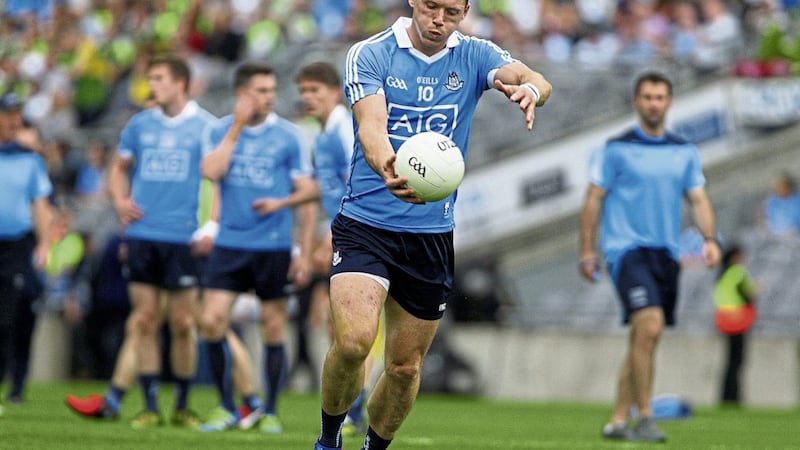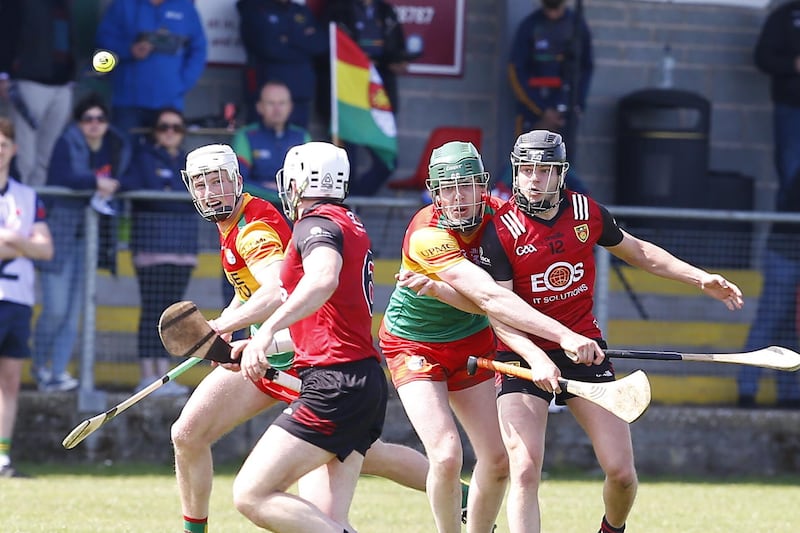MORE than a third of inter-county GAA players felt pressure to take supplements – and almost three-quarters were sourcing the products themselves.
In terms of other intake, top level GAA men tend to consume higher quantities of alcohol than the general populace when they do drink, with nearly nine out of 10 players reported binge-drinking during the off-season.
The findings are based on a major survey of the 2016 inter-county panels conducted by the Economic & Social Research Institute (ESRI) commissioned by the GAA and Gaelic Players’ Association (GPA).
More than 92 per cent of players had used supplements, with almost 82 per cent having done so during that 2016 season. Usage was higher among footballers overall (nearly 97 cent, and 87 per cent that year) compared to hurlers (87.6 per cent having ever used them, 76 per cent in 2016).
The findings on supplements are worrying, with only 26 per cent of players getting theirs from the team set-up – and the same proportion sourcing theirs from the internet.
More players (31.5 per cent) got theirs from shops, with six per cent getting them from other people, leading to concerns about the contents of the products – supplements of dubious provenance have led to drugs bans for athletes in various sports, including the GAA.
On top of the fact that more than 36 per cent of players felt pressure to take supplements, almost half did not feel they had enough knowledge about the long-term consequences of taking such products.
Supplement intake was also poorly monitored in hurling outside the top tier: although almost 71 per cent of Liam MacCarthy Cup participants were monitored, that level of scrutiny fell to less than a quarter below that stratum: under 24 per cent for the old second tier, less than 10 per cent for Nicky Rackard, and less than 20 per cent for the Lory Meagher level.
There was better monitoring of supplement intake in football, with almost 79 per cent at Division One level and around two-thirds for Divisions Two and Three, although that figure fell to less than 41 per cent for Division Four footballers.
GPA CEO Paul Flynn said: “The report… underlines the need for a robust range of player development supports from the GPA.
“It shows us there is a growing need for more education and information for players about their roles and responsibilities as inter-county players, particularly around supplement usage and alcohol consumption.
“Encouragingly, our own research tells us that players who are actively engaged in their own personal development through GPA programmes are less likely to engage in risky behaviours in these areas and benefit from a better-balanced lifestyle.”
Another major area of focus for the report, the second ESRI study to examine how the commitment levels of the amateur sports affect players’ lives, surrounds career choices.
According to the new ESRI research, Gaelic players are highly educated, with 61 per cent having at least a university degree compared to 35 per cent of the general male population of the same age.
However, the study finds that players appear to be basing many decisions related to their education and their professional career around playing Gaelic games.
One in four players reported choosing a career path after second-level education that would facilitate them to play senior inter-county; this percentage was higher among top-tier players.
More than 40 per cent of players said they would not select the same career path again, and this figure rose to over 50 per cent among players who selected their post-secondary level education pathway because it allowed them to play inter-county.
Four out of five players reported difficulty balancing the demands of studying and playing during their education course; one in six either dropped out of a course or had to repeat a year; and 80 per cent missed college lectures/classes/labs.
Elish Kelly, ESRI researcher and lead author of the report, commented: “Unless the underlying drivers that are giving rise to the current inter-county commitment levels are identified and addressed, the knock-on effects identified in this study are likely to be amplified among future generations of players. One of the main benefits of the current research is that players themselves have identified changes that could be made to assist with addressing some of these effects.”
Uachtarán CLG John Horan said, "There is a significant amount of time invested and commitment made by our inter-county players. Previous feedback from the playing population was extremely useful and likewise this report will assist our approach to player welfare on and off the field."
This report also examines a range of other issues relevant to players’ lives, including alcohol consumption, supplement use, their views on player welfare supports, and their experiences within the inter-county set-up.
* Key findings:
* One in four players reported choosing a career path after second-level education that would facilitate them to play senior inter-county. This percentage was higher among top-tier players.
* More than 40 per cent of players would not select the same post second-level career path again. This figure was over 50 per cent among players who selected their post second-level education pathway because it allowed them to play inter-county.
* More than 80 per cent of players reported difficulty balancing the demands of studying and playing during their education course; 16 per cent either dropped out of a course or had to repeat a year; and 80 per cent missed college lectures/classes/labs.
* Some players select sectors of employment with fewer working hours (e.g. education).
* Working fewer hours, and experiencing lower promotion prospects because of inter-county commitments, may be affecting players’ earnings.
* The proportion of senior inter-county players who consume alcohol is similar to the general male population of the same age. However, they tend to consume higher quantities of alcohol when they do drink. This is particularly the case during the pre-season and off-season. Nearly nine out of ten players reported binge-drinking during the off-season.
* Almost nine out of ten players consume supplements and are recommended to do so by teams. However, many players source their supplements from outside of the inter-county set-up (e.g., internet) and only over half of players indicated that supplement use is monitored within their team.
* Players reported inequalities with regards to Player Charter and County-Board supports. In particular, lower-tier counties appear to be bearing the brunt of these issues, such as the timing of when expenses are paid.
* Players identified two key areas where they would like to receive more support. These were ‘professional career’ and ‘how to keep their inter-county participation in perspective’.
* Players specified that the issues they would most like to change about their inter-county experience would be a reduction in the length of the playing season, fewer time commitments, and the reintroduction of enjoyment into the games.
* The majority of the issues that players would change about the inter-county set-up are under the remit of either the inter-county management team or the players’ County Boards.








